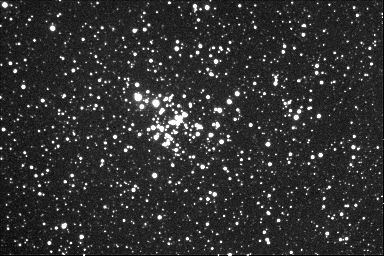Are you ready for me to warm you up? Then let's go on a...
WINTER STARHOP

Time for one last dance.

"The long and winding road... That leads me to your door.."
 | Cetus | So, are you ready to get into something new? Then you'll like the Cetus field. The challenge here has not been so much "finding" these objects as it is having the correct sky to "see" them! But Patience and Persistence pays... and now it's time to show you what I've Practiced! Heading back to Diphda, (i like this star and its' name... ;) we're ready to drop down for galaxy study number one: the NGC247. A very definate spiral galaxy with an intense "stellar" nucleas! Sitting right up in the eyepiece as a delightful oval, the NGC247 is has a very proper galaxy structure... Defined core area whose concentration slowly disperses toward its' boundaries... with one well-defined dark dust lane helping to enhance a spiral arm. Most lovely! Continuing "down" we move on to the NGC253. Talk about bright! Very few of my galactic studies come in this magnitude! (the 4.5 also picks it up very well, but i prefer the 12.5 to rock out structure...) Very elongated, and hazy, it reminds me sharply of the "Andromeda Galaxy"!!! The center is very concentrated, and the spiral arms wrap their way around it beautifully! Dust lanes and bright hints of concentration are most evident... and one of its' most endearing features is that it seems to be set within a mini "Trapezium" of stars. A very worthy study... Now, let's hop off to Delta, shall we? I want to rock your world.... because the M77 rocked mine! Once again, easily achieved in the small scope, M77 comes "alive" with aperature. This one has an incredible nucleas... and very pronounced spiral arms!! Three big, fat ones! Underscored by dark dust lanes, the arms swirl away from the center is a galactic display that takes your breath away! The "mottling" inside the structure is not just a hint in this ovalish galaxy... they are quite there! One incredible little customer it is, and one I guarantee you won't find "ho hum"!! OK, so are you ready to dig deeper into Cetus? Then grab that map and let's rock! Delta will be our starting point here, and the "fall line" runs west to east on the north side... First up is galaxy NGC1073, a very pretty little spiral... with a very "stretched" appearing nucleas that seems to be "ringed" by its' arms! Continuing along the same trajectory, we find the NGC1055. Oh, YEAH! Edge-on, baby!! This soft streak of light is accompanied by a trio of stars... The galaxy itself is cut through by a dark dust lane, but what appears so unusual is the core is to one side!! I LIKE it! ;) Now we've made it to the incredible M77. But, let's keep on the path and pick up the NGC1087, a nice, even looking spiral galaxy with a bright nucleas and one nice, curved arm.. Ready to head for the beautiful variable Mira? Then let her be the guidestar, because halfway between there and Delta is the NGC936, a soft spiral galaxy with a "saturn" shaped nucleas. Phew! I'm getting tired! Ready to stop with Cetus for awhile? Me, too. Ya' done good, kid... |
 | Pices | So... you think it's going to be impossible for us to top that last one, huh? Then pull that hat down tighter on your head... because I'm gonna' blow you away.... Let's go fishin' in Pices! We're heading for Gamma Arietis, and drawing a mental line between it and Eta. Approximately two-thirds of the way is the spectacular M74! Now, this... THIS is a by-gosh spiral galaxy!! It's "rolled" structure becomes immediately apparent in either telescope. The outstanding core area is intense, and the arms twist away from it quite tightly! It sports several areas of bright clusters/nebulosity... and as it twists away into space, two lovin' arms reach right out and wrap themselves around it! Very reminescent to me of the "Whirlpool"... the "galactic stuff" wisps away at the edges where several bright stars play the field with it. (now, now... you're fogging up the optics! ;) This is one exceptionally pretty galaxy... and it has been my very great pleasure to have found it at last!! |
 | Lepus | Orion is standing up now, and one of the fields of the area that I've been studying is prime... Let's go get it! Lepus... (that "wascally wabbit") has been an ongoing process. One of the finest pieces of work in this area is globular cluster, M79. It is not the most brilliant of small globulars that I have seen, but at 17mm the outer stars begin to resolve, making it quite pretty. Another faint fuzzy to be found in Lepus is spiral galaxy, NGC1964. Again, not the most awe inspiring one I've ever traveled to, but with patience and steady sky, some brightenings around the outer edge of the central structure begin to show... making it worth the hunt! R Leporis... Hind's "Crimson Star". This one is an almighty pain, because it is not really visible to the naked eye! And I am probably throwing my reputation totally away on this one... (like I care!) but if I've got the right one, it sits below Rigel. Very deep red, like Mu Cephii. Nice... ;) |
 | Canis Major | By locating Beta, this galaxy drop is fairly simple by continuing on a basic southern trajectory (working the "fall line" one fov at a time from west to east...). Use mid-range magnification as you move between Beta and Theta, then power up as you locate each one! The NGC2207 and IC2163 is an interesting double spiral galaxy complex. While the results shown in the dob are far from a Hubble picture, it is possible to make out two brightened galactic cores whose outer regions overlap! A most curious region to explore... and well worth the hunt! The NGC2223 is next along the line, and is also a spiral galaxy. There is a subtle hint of a core region, but for the most part, this galaxy is evenly distributed, with just the faintest indications of spiral structure at the outer edges. Continuing south will find the NGC2217 a somewhat brighter spiral galaxy, that appears under higher magnification to have a halo surrounding it! Now for a jump back to Sirius (but don't look at it!) and drop south below the M41. The last of the galaxy hunt in Canis Major is tiny spiral, NGC2280. Set in a delightfully rich field of stars, this shy oval of galactic "stuff" reveals only the faintest hint of an arm during excellent seeing conditions. (Gosh I love scopin' with YOU! ;) |
 | Puppis | The Puppis Star Fields are an exceptional challenge that took me many weeks of study to complete... and even then I haven't captured all that can be seen! But, let's take a deep breath and head out... Shall we? Starting in the area of the M46 and M47, a great place to hunt out is NGC2423, a soft collection of stars that resembles a fishook. Now, dropping south of the M47, we head on to tiny planetary nebula, NGC2440, who appears as nothing more than a slightly elongated "soft star". Then continue southwest for open cluster, NGC2421, a small open cluster that reminds me of an exquisitely tiny Brocchi's Cluster! Ready for some more? Then let's do it!! Go for the M93 next, because a move southeast will find the NGC2482 a pretty, looping open cluster. Time to start nudging the scope to the southeast this time, to capture NGC2467 a gentle open cluster also accompanied by a faint nebula. Continue on the same trajectory for open cluster, NGC2453, a small "patch" of faint stars. Think we can possibly sink any lower? Darn right we can! When Puppis stands straight up on the southern horizon, a clear sky provides a "peek" into those much sought after open clusters that can't be found at any other time! (told you this was a challenge!! ;) This time we are going to push the dob from east to west, dropping the field south on each successive pass. Starting southwest of Rho, we find the NGC2489, faint, but well resolved, this cluster is a double handful of diamond dust. Now, bump the field, and let's rock again! Next pass brings up NGC2489, a rich field of stars, that seems to concentrate. (yes, i see it... next pass, ok?) Return again, and let's capture NGC2533, a very faint field of stars that are basically the same magnitude.. And over brings us to NGC2439, who is much brighter, and also has a much larger star in the field.. Get "down" now... for the NGC2571, once again, a "looping" field of faint stars with a couple of brighter members.. And let's go just a bit lower this time for NGC2567, a delightful group of stars that remind me of a greek letter. And that's it for us at this latitude! (of course, we could just drink a corona, and change our latitude, huh? ;) But then again... if we could just get the dob up on a hill somewhere... That would rock! Nah. It would roll. ;) |
That was grrrrrrrreat, wasn't it? But you know I'm never going to let YOU go! Why?
Because I don't want to... ;)
